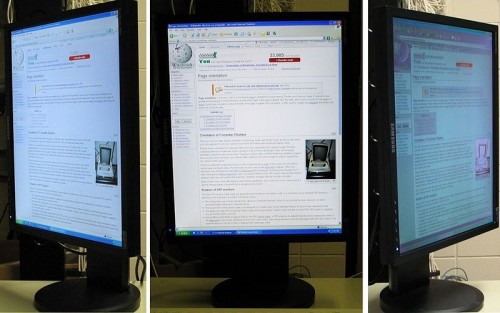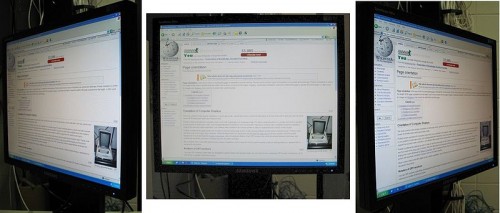Digital Signage – Size, Aspect Ratio and Orientation
Posted by: Richard Williams | Posted on: | 0 Comments
TV screens have always come in different sizes from small 10” portable devices (and smaller) to huge home cinema systems. However, it is only been in the last few years since the advance of wide screen that there has been a choice of aspect ratio. Which gives you more choice for your digital signage screen!
No longer are all TV screens in 4:3 ratios now there are numerous different aspects available for modern LCD TVs such as 16:9 which is fast becoming the most common. This has both positives and negatives when it comes to digital signage where LCD enclosures a are available that allow the use of both portrait and lanscape modes of viewing.
Any content designed, for instance, on a 4:3 system will have to either be stretched or letter-boxed to fit on the 16:9 screen (letter-boxing is when black borders cut the screen size).
However, this wide screen aspect ratio does allow more generous orientation especially when you turn the screen to portrait orientation.
Normally when you view a 16:9 TV screen you watch it in landscape or widescreen mode. However, by turning the orientation you can provide a longer screen – ideal for the modern world of digital posters and signage.
Portrait orientation is ideal for digital signage because it is less usual than landscape screens making it more distinctive and attractive. It also follows similar aspects to the traditional poster and makes content easier to access by people who are used to this sort of orientation with print media.
However, it must be noted that LCD screens, while they can be easily orientated to portrait mode there can be a loss of resolution and brightness, particularly from viewing from the side as the light polarization technology of an LCD monitor is designed to run vertical.
Post shortlink:
Popular Products
LCD Enclosure
Need armor for your LCD/LED screen(s)? Outdoors or inside the versatile LCD enclosure protects against thieves, vandals & the weather. Installation idea: NFL stadiums.
Outdoor Digital Signage
Exclusive 46” outdoor screen protection. Dubbed the ‘Totem’, due to its distinct design, it repels damage threats, but attracts audiences. Installation idea: Drive-thru restaurants.
Portrait Flat Panel Enclosure
Safeguard your eye-level advertising display screen(s), indoors or outdoors. Completely customizable, add exciting features like touch screen technology. Installation idea: Restaurant frontages.
Indoor Digital Signage
Popular purchase for retail outlets! Great for ‘point of sale’ persuasion, boost your brand with static & motion advertising from a single unit! Installation idea: Mall of America.






